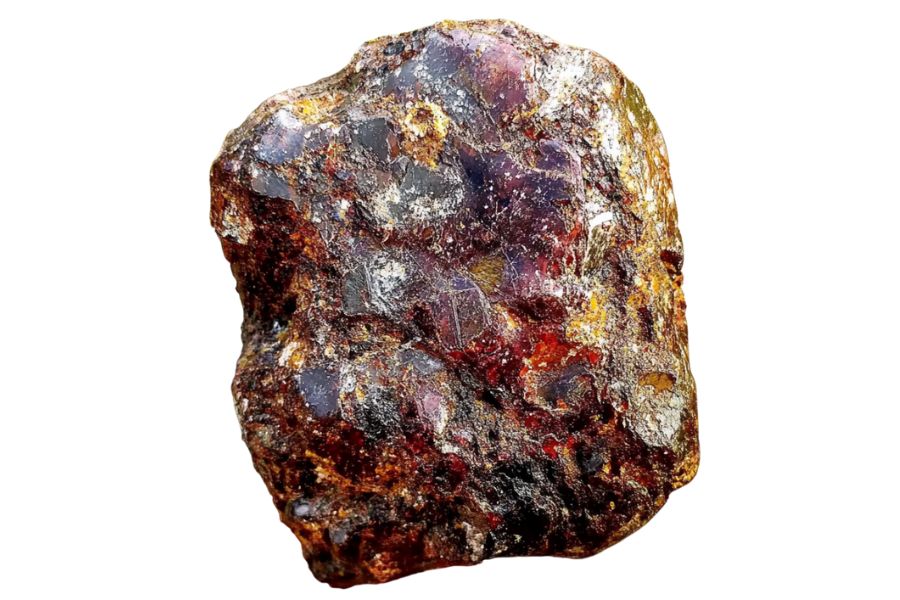Arkansas dirt has secrets. Small red gems hide in streams and rocks across the state. Garnet hunting brings folks out with buckets and hope every summer.
These deep red stones catch the light in a special way. They form in certain types of rock that you can find in Arkansas. The colors range from deep wine-red to almost purple depending on where you dig.
Weekend rock hounds and serious collectors both search for garnets here. The hunt might take you to public land, creek beds, or old mining areas. Each spot has its own story and type of garnet to find. With some patience and a good eye, you might head home with your own red treasures.
How Garnet Forms Here
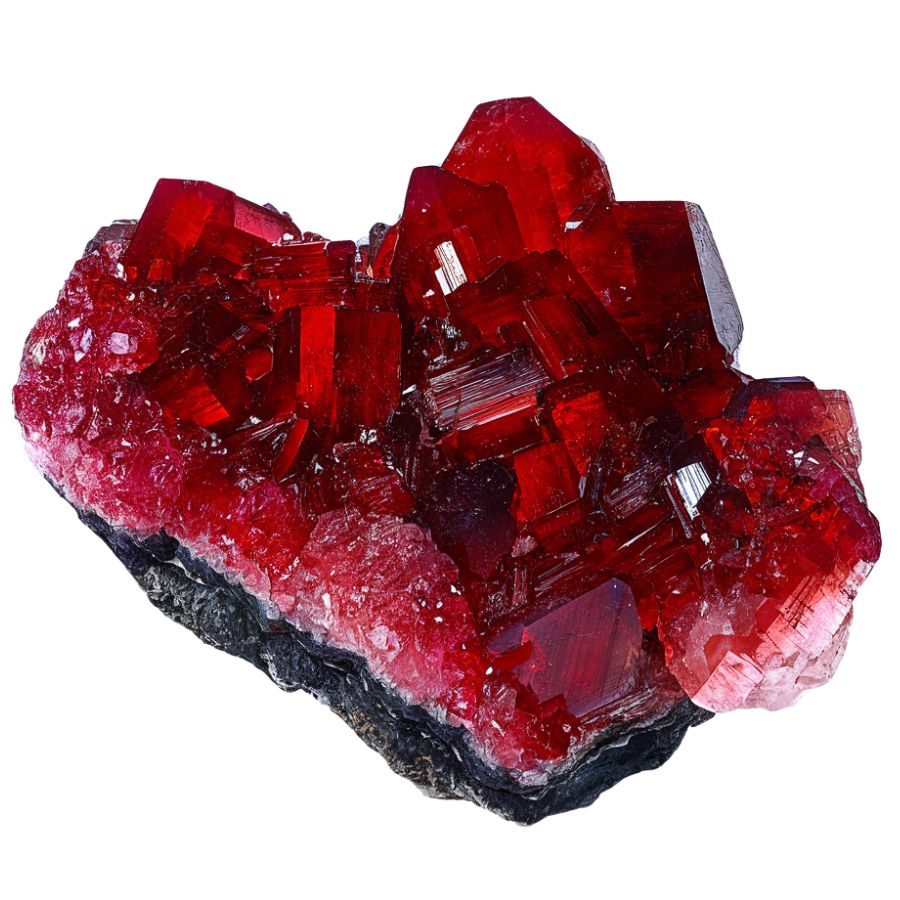
Garnet forms deep underground when rocks get squeezed and heated during metamorphism. Think of it like baking cookies – but instead of dough, you’ve got minerals like aluminum, iron, and silica getting cooked under intense pressure.
When these minerals reach temperatures around 400-700°C, they start rearranging their atoms into garnet’s distinctive crystal structure.
What’s cool is that garnets often grow by pushing other minerals out of the way! That’s why they form those perfect geometric shapes.
Most garnets need high pressure too, which is why they’re usually found in rocks that were once buried miles beneath the surface. The slower they grow, the bigger and clearer they become – some taking millions of years to reach their full size.
Types of Garnets
Garnets are captivating gemstones that showcase an impressive range of colors and varieties, each determined by their unique chemical composition. Understanding these differences helps in identifying the stone’s value.
Almandine Garnet
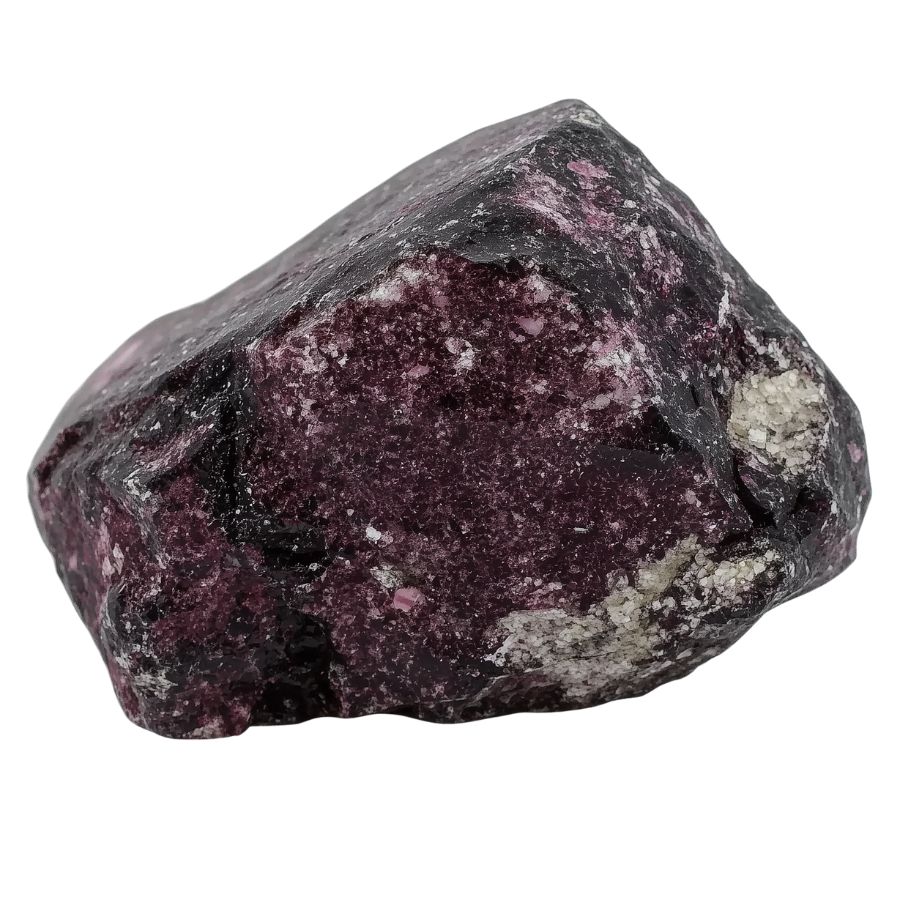
Almandine garnet stands out with its rich, deep red to reddish-brown color. The stone sometimes shows hints of orange or brown, making each piece unique. Its color intensity remains consistent throughout the stone, creating a beautiful depth that catches the eye.
The crystal structure of almandine follows a perfect cubic pattern, forming well-defined shapes with smooth faces. This symmetry contributes to its striking appearance and helps light bounce through the stone evenly.
What makes almandine special is its high iron content, which gives it a higher specific gravity than other garnets. This means it feels slightly heavier in your hand compared to similar-sized stones. Its refractive index of 1.74 to 1.83 creates excellent brilliance and fire.
Most almandine garnets are remarkably clear, though some may contain natural inclusions that create interesting patterns. These patterns can add character to the stone without affecting its overall beauty or durability.
Pyrope Garnet
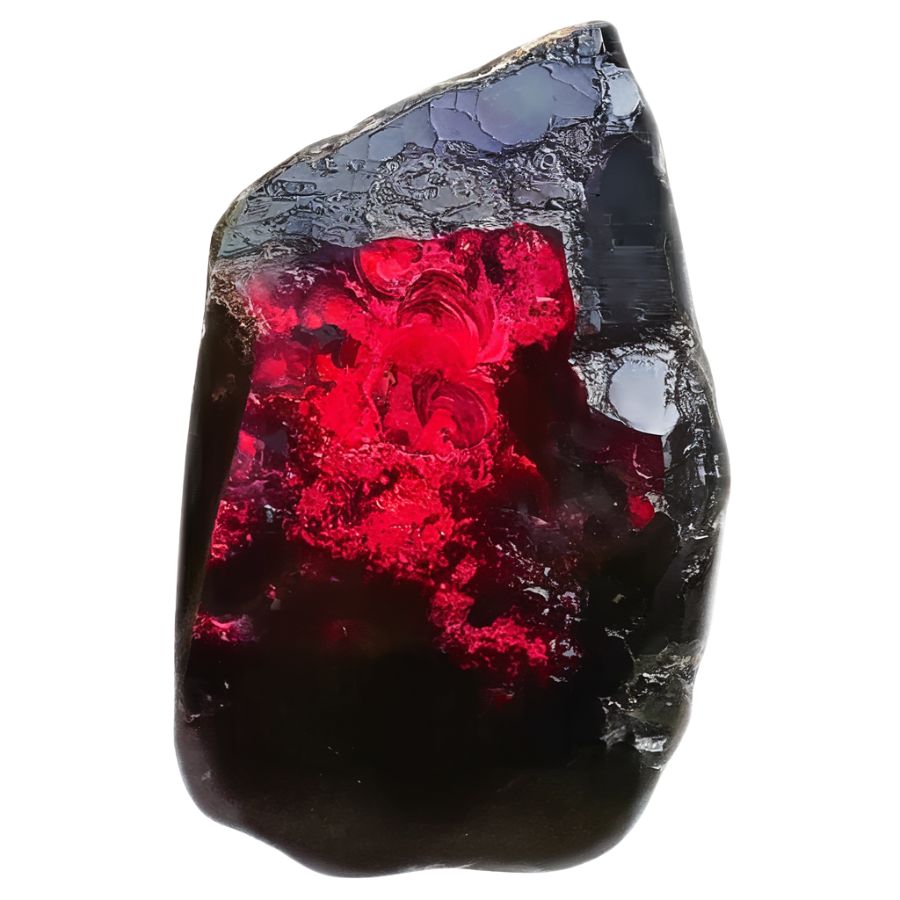
Pyrope garnet captivates with its intense red-to-purplish-red color. The color is so pure and vibrant that some specimens have earned the nickname “Cape Ruby.”
This stone has excellent clarity, rarely showing visible inclusions. When present, some inclusions can create a fascinating star effect called asterism, where a six-pointed star seems to float on the surface.
The stone appears especially vivid when cut into clean, geometric shapes that maximize light return.
Some pyropes show a subtle color shift, appearing slightly different under natural and artificial light. This subtle change adds to their charm and makes each stone unique.
Their exceptional clarity and lack of internal flaws make them particularly appealing to collectors.
Spessartine Garnet
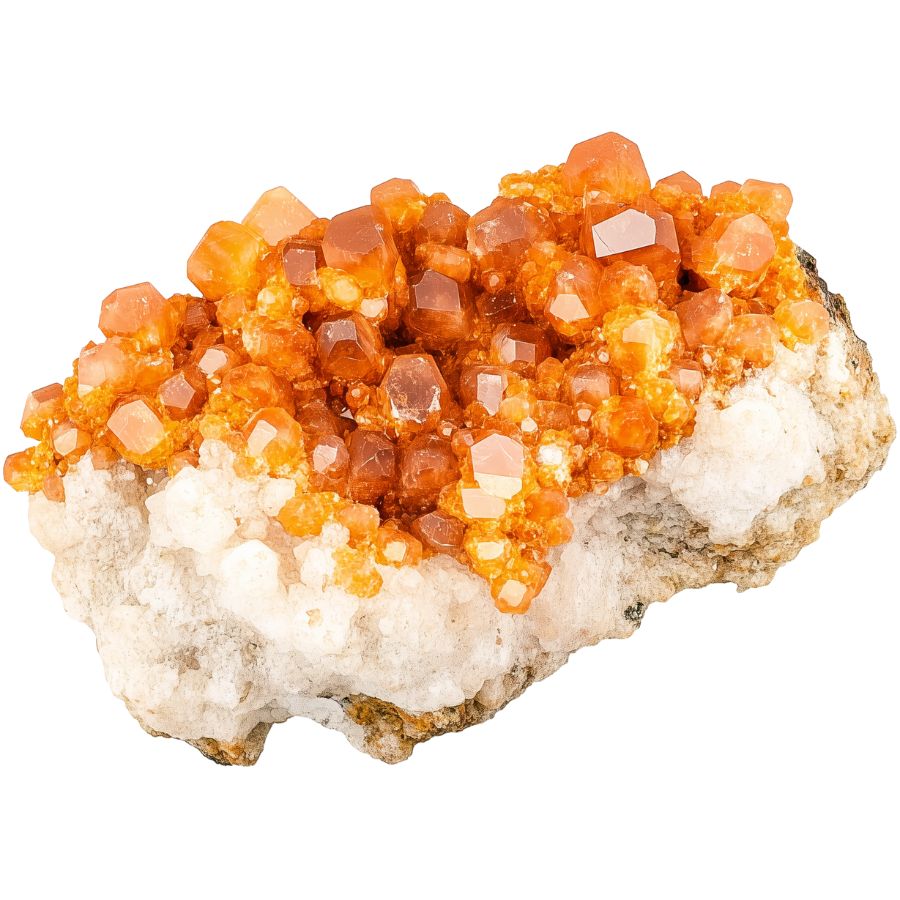
Spessartine garnet showcases a stunning range of orange colors, from bright mandarin to deep reddish-orange. The most valued pieces display a pure, vivid orange. This distinctive coloring comes from manganese in its chemical makeup.
When cut properly, spessartine exhibits bright flashes of light and exceptional sparkle. Some stones show a subtle “sugar-like” texture that creates a soft, internal glow.
Pure spessartine is rare in nature, making high-quality specimens particularly valuable. Most stones contain trace elements that create subtle color variations.
The stone’s transparency ranges from completely clear to slightly cloudy. Clear specimens are highly prized, but some collectors prefer stones with slight cloudiness that creates an interesting depth effect.
Andradite Garnet
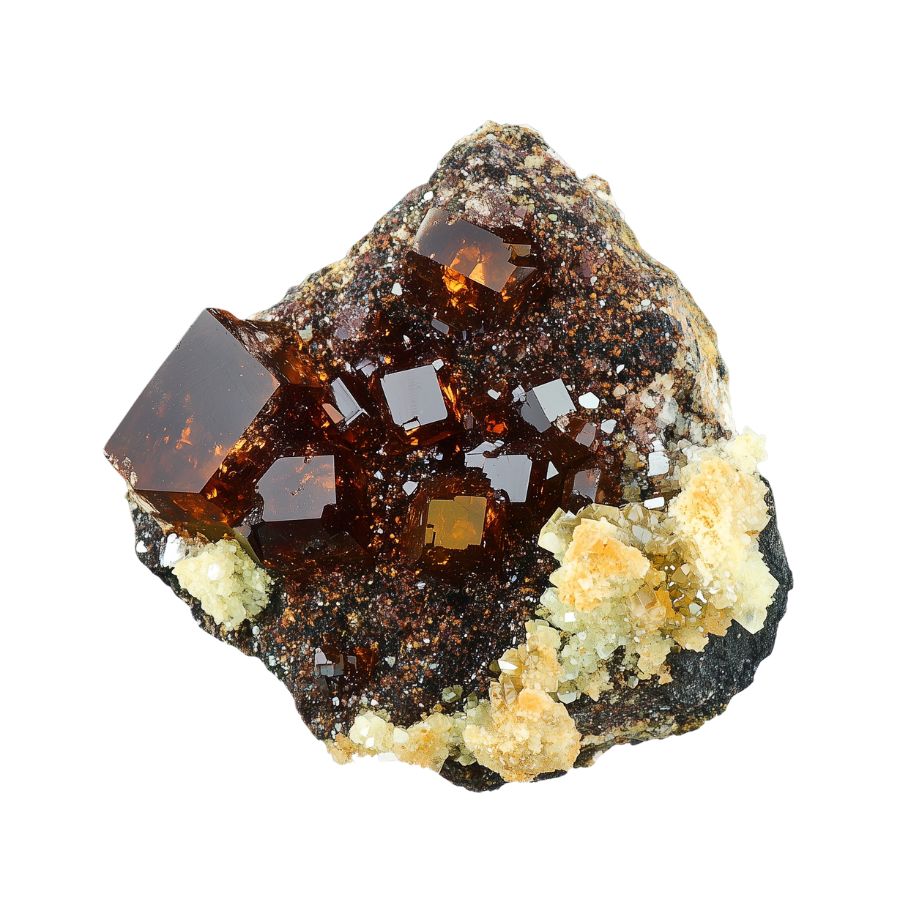
Andradite garnet displays the widest color range of all garnets. Colors span from bright green to yellow, brown, and black. The green variety, known as demantoid, is particularly treasured for its brilliant, emerald-like color and exceptional sparkle.
This stone has the highest dispersion rate of all garnets, even higher than diamond. This means it breaks light into rainbow colors more effectively, creating fascinating fire and brilliance.
Some andradite garnets contain unique internal features called “horsetail” inclusions. These fine, needle-like patterns are actually desired by collectors and add to the stone’s value.
The stone’s surface has a bright, glass-like luster that enhances its natural beauty. Some specimens exhibit unique optical features such as asterism (star-like patterns) and chatoyancy (cat’s eye effect), which further enhance their visual appeal.
Grossular Garnet
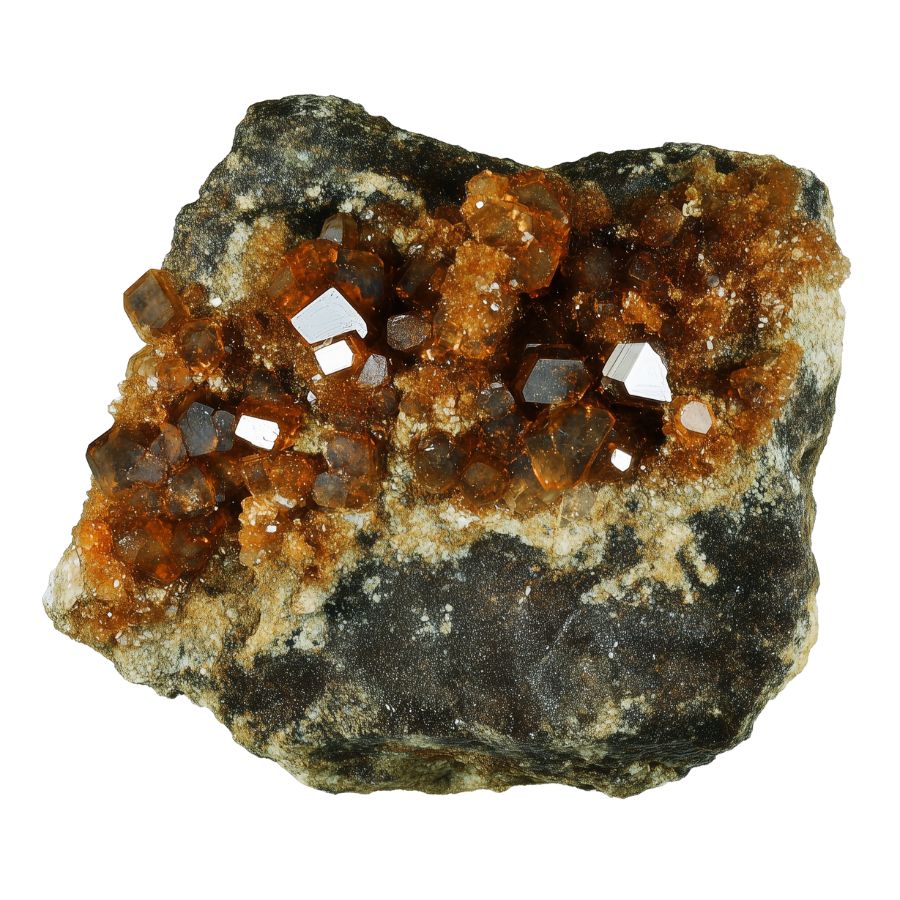
Grossular garnet comes in an amazing range of colors – from green and yellow to pink, orange, and even colorless. The most striking feature is the presence of internal swirls and streaks that create unique patterns within each stone.
The stone’s surface has exceptional brilliance that rivals expensive gems like emeralds. Light bounces through it beautifully, creating bright flashes and sparkles.
A special variety called Mint Garnet glows under ultraviolet light, creating an otherworldly effect. This unusual property makes it particularly interesting to collectors. The stone’s clarity is typically excellent, with few visible impurities.
The presence of trace elements like chromium and vanadium creates its varied colors. These elements mix in different amounts, resulting in subtle color variations that make each stone unique.
Some pieces show color zoning, where different shades blend together in distinct patterns.
Uvarovite Garnet
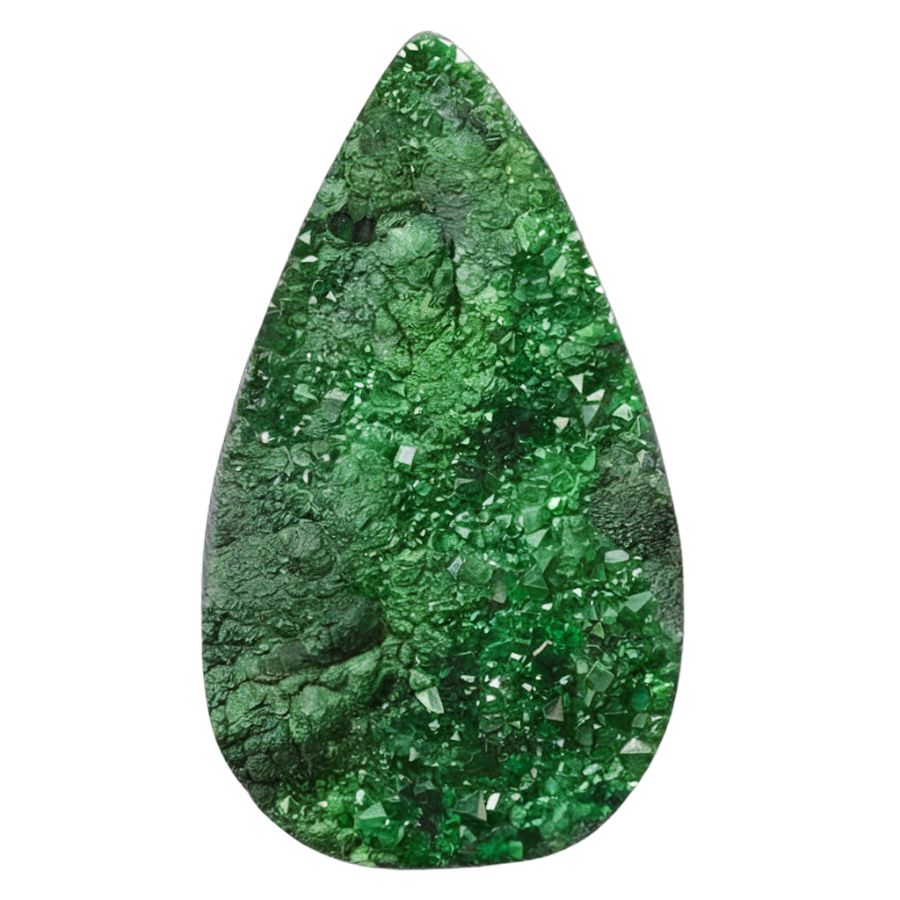
Uvarovite garnet displays a striking emerald-green color that remains consistent in all specimens. Unlike other garnets, where green hues may arise from chromium impurities, uvarovite’s green is inherent to its composition.
Instead of forming large crystals, uvarovite typically grows in clusters of tiny crystals. These clusters, called druzy, create sparkling surfaces that look like green sugar coating the rock beneath.
Under ultraviolet light, it shows an unexpected red glow, adding another layer of interest for collectors. This fluorescence is a unique feature not commonly found in other garnets.
These stones rarely grow large enough for traditional gem cutting. However, their natural crystal formations are so beautiful that they’re often left in their original state. The tiny crystals catch light from multiple angles, creating a dazzling display.
Rhodolite Garnet
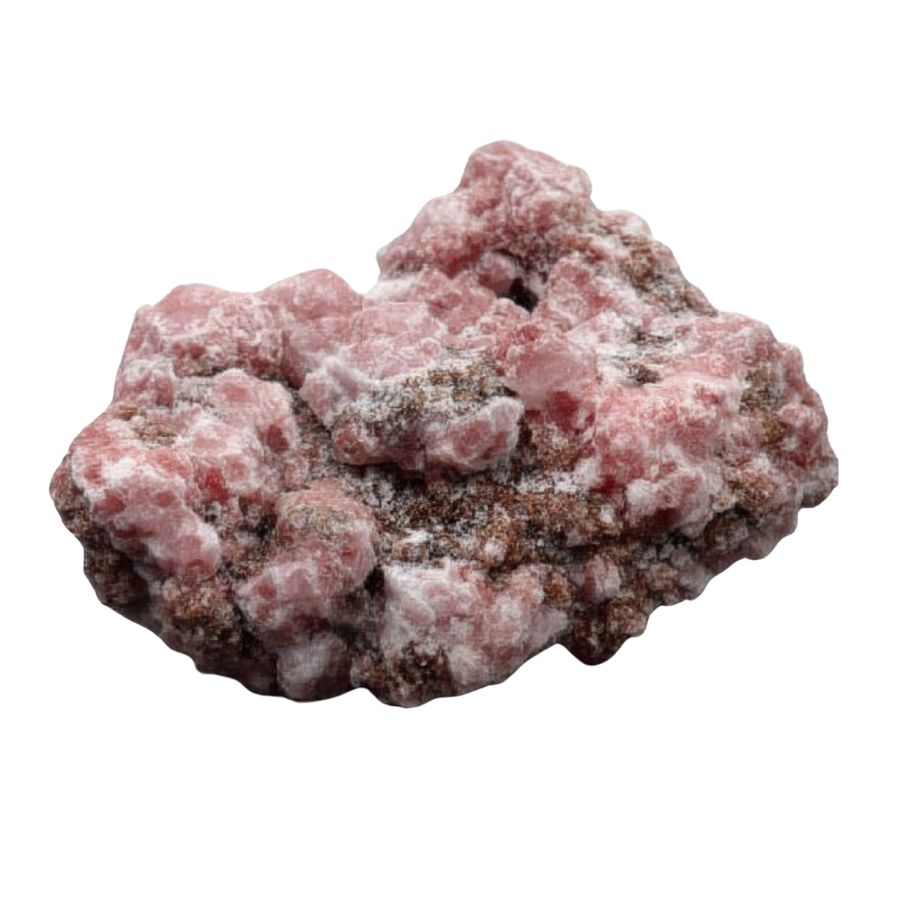
Rhodolite garnet stands out with its beautiful purple-red to raspberry-pink colors. The colors can shift between purple and red depending on the lighting, creating an interesting play of hues. This color range makes it distinctly different from the deeper reds of other garnets.
The stone’s clarity is typically excellent, with very few internal features visible to the naked eye. The surface has a glass-like shine that enhances its natural beauty.
What makes rhodolite special is its mixed composition of two different garnet types. This mixture creates its unique color range and optical properties. The stone often shows stronger color saturation in its center, fading slightly toward the edges.
Rhodolite garnet is particularly valued for its vibrant colors that can mimic more expensive gemstones like rubies and amethysts, making it a popular choice among collectors and jewelers alike.
Hessonite Garnet
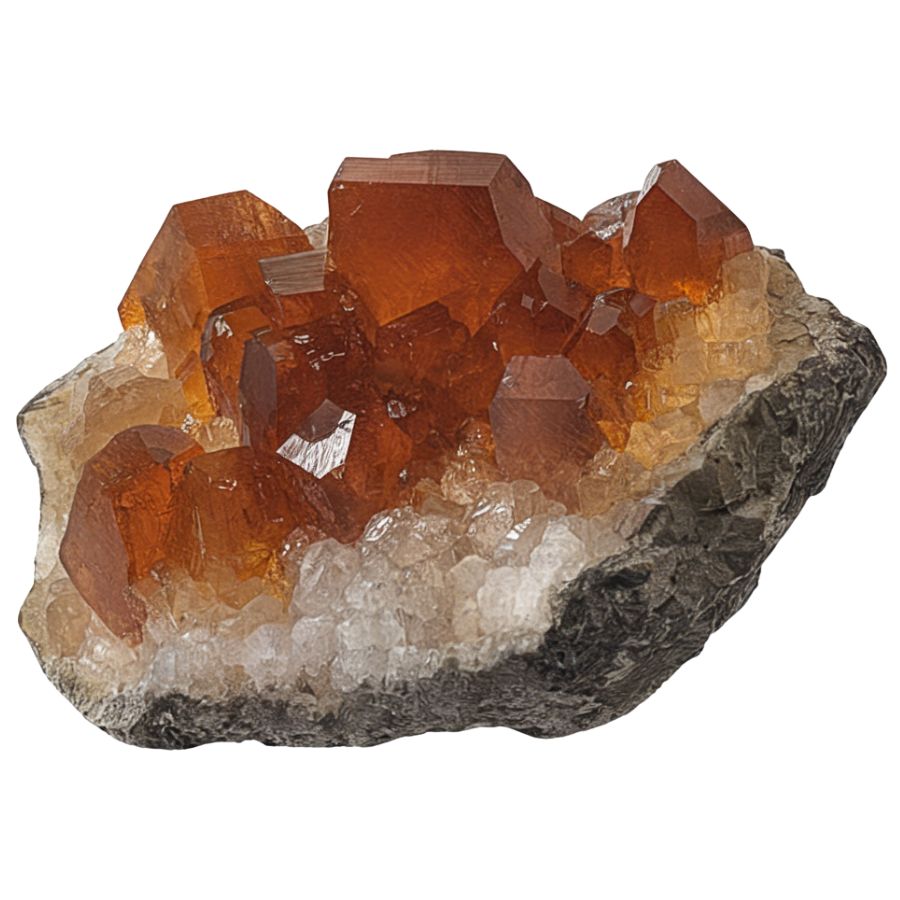
Hessonite garnet showcases warm honey-to-cinnamon colors, ranging from golden yellow to deep reddish-brown. Some pieces display hints of purple, creating complex and appealing color combinations.
Inside the stone, you might find interesting patterns created by tiny needle-like crystals. Unlike many gems where inclusions reduce the value, these internal features are appreciated in Hessonite. They create unique patterns that make each stone one-of-a-kind.
The stone’s transparency varies from crystal clear to slightly cloudy. This variation can create interesting effects, especially when light passes through the stone. Some pieces show a subtle glow that seems to come from within.
High-quality hessonite stones are relatively uncommon, especially in larger sizes. Their warm colors and unique internal features make them particularly interesting to collectors.
Tsavorite Garnet
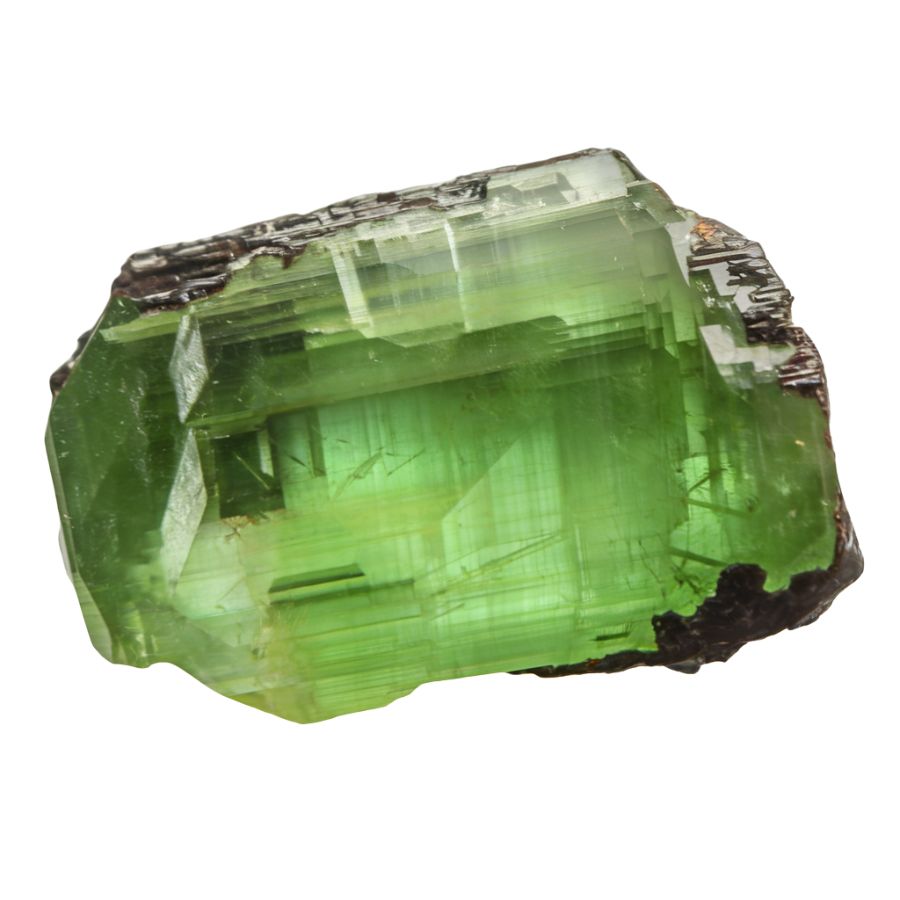
Tsavorite garnet displays a brilliant green color that ranges from bright lime to deep forest green. This stunning color comes from tiny amounts of chromium and vanadium in the stone.
The green is so pure and vibrant that it often matches or surpasses the color of fine emeralds. The surface has a glass-like shine that makes the stone look alive with movement.
Each tsavorite has its own personality in terms of color depth and brightness. Some stones show subtle color changes under different lighting, while others maintain a consistent deep green.
Star Garnet
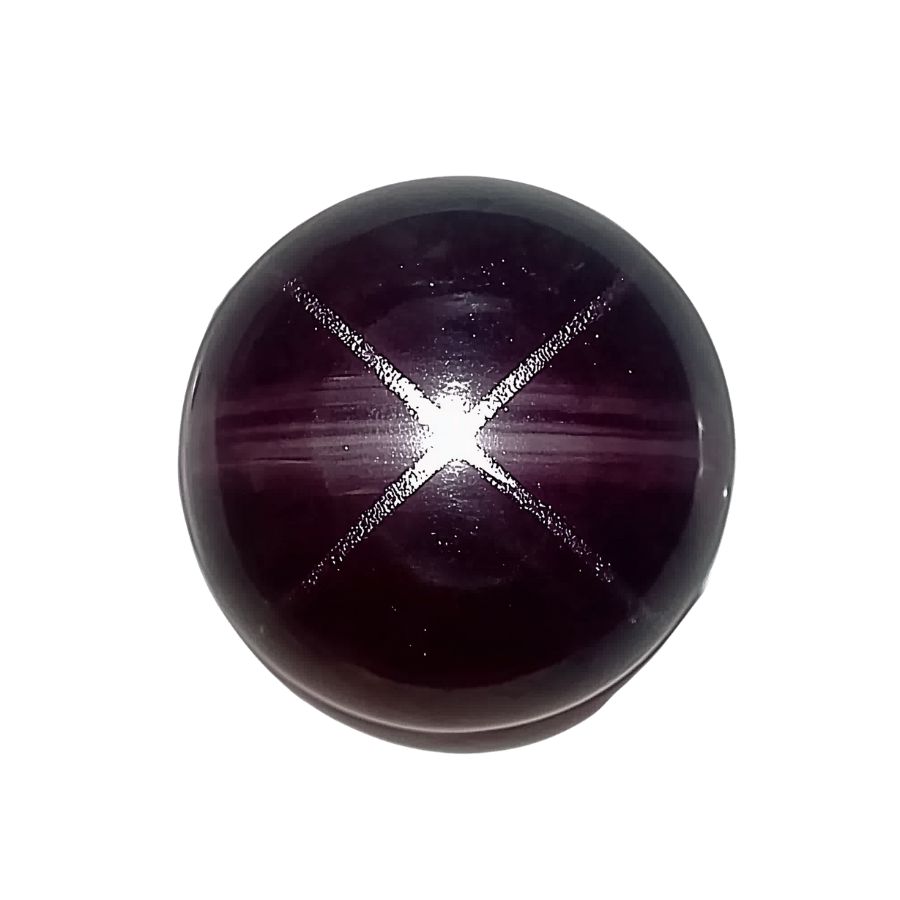
Star garnet shows a fascinating light pattern that looks like a star floating on its surface. This effect, called asterism, comes from tiny needle-like crystals inside the stone. The star usually has four or six rays that move as you turn the stone under light.
The stone’s color is typically deep red to purple-red, often with brown undertones. When polished into a smooth, rounded shape, the star effect becomes more prominent.
The best specimens show sharp, well-defined star rays against a rich, even background color. These stones are quite special because not all garnets can form stars.
The right conditions during formation must exist for the star effect to develop. The tiny crystals inside must align perfectly to create the star pattern. The star effect is natural and permanent – it won’t fade or change over time.
What Rough Garnets Look Like?
Garnets display unique identifying traits when found in their raw, natural state. Look for these distinguishing features:
Look for Distinctive Angular Shapes
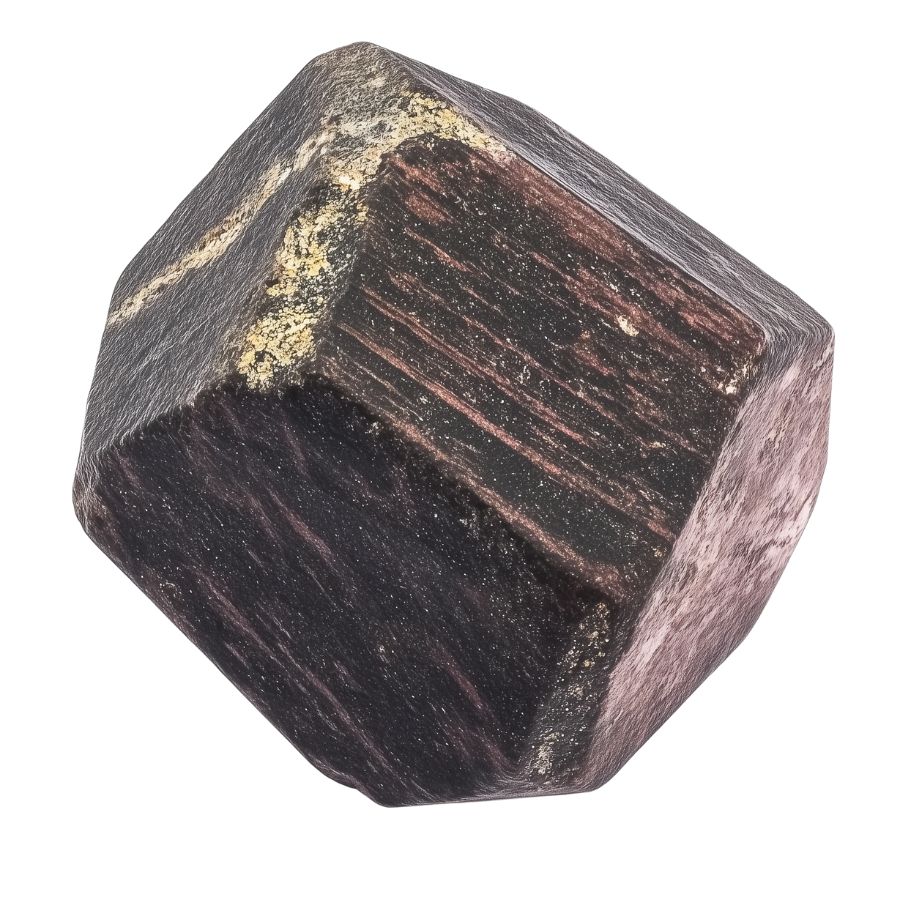
Raw garnet typically forms in dodecahedral or trapezoidal crystal shapes. Think of it like tiny, naturally-formed geometric shapes.
Unlike smooth river rocks, rough garnets have sharp edges and flat faces. Even when broken, they tend to maintain these angular patterns. You’ll often spot them as chunky, block-like crystals that look like they’ve been roughly carved.
Check the Color Range and Transparency

Garnets aren’t just red! Look for deep wine colors, but also keep an eye out for orange-brown, green, or even black varieties.
Hold it up to light – rough garnets often show some translucency at the edges, even if the center seems opaque.
Examine the Surface Texture
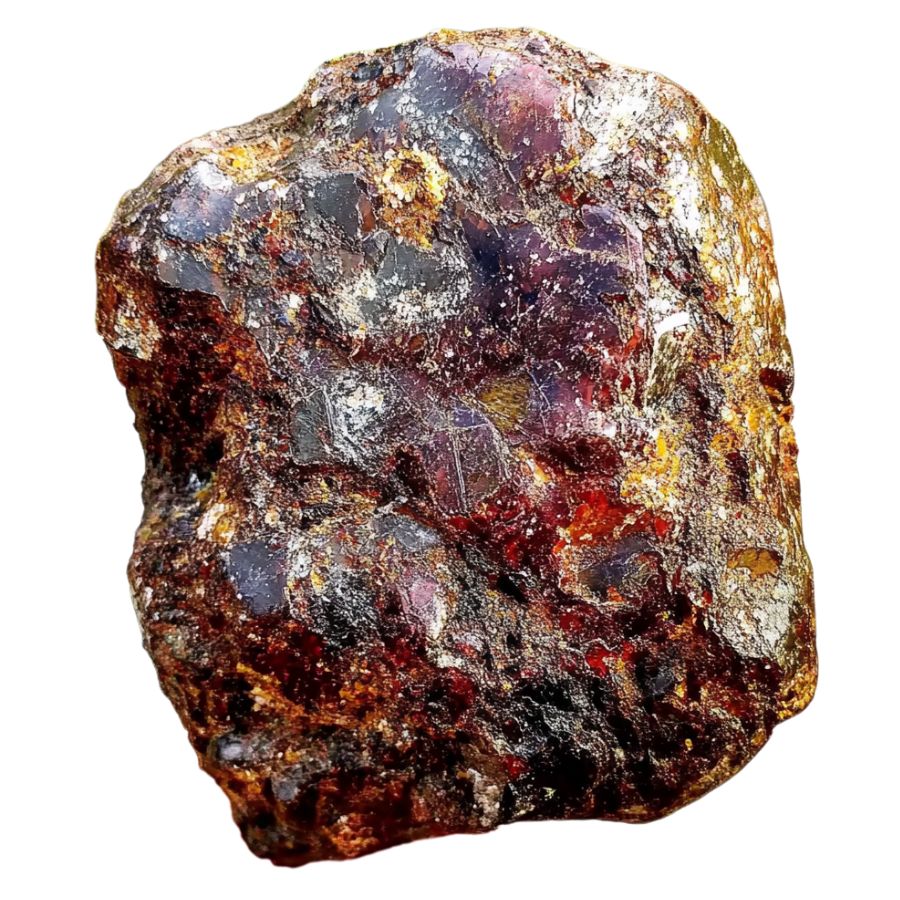
Raw garnets have this unique, almost greasy-looking surface luster. Not shiny like glass, but more like wet plastic.
Run your finger over it – you should feel a smooth yet slightly waxy texture. If it’s been weathered, the surface might be slightly pitted or rough, but you’ll still see that characteristic luster in protected areas.
Test the Hardness and Toughness
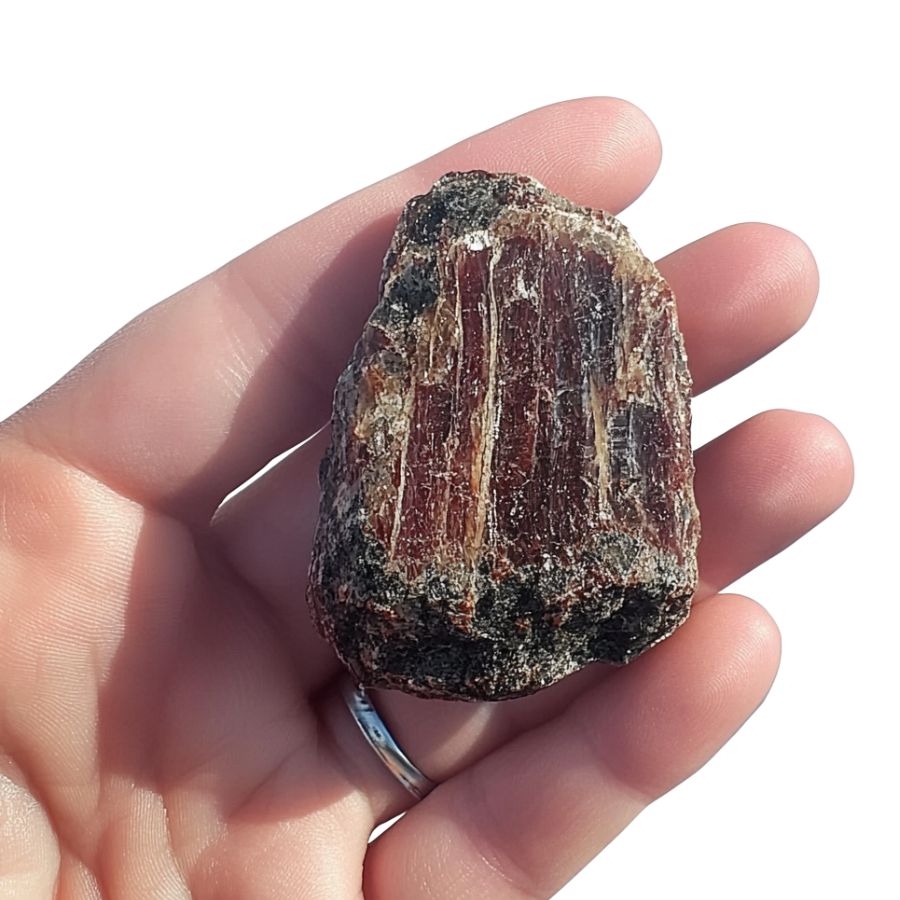
Here’s a quick field test: garnets can easily scratch a penny but won’t scratch quartz. They’re surprisingly heavy for their size – noticeably heavier than a similar-sized piece of quartz or feldspar. Don’t be fooled by lighter stones that look similar!
A Quick Request About Collecting
Always Confirm Access and Collection Rules!
Before heading out to any of the locations on our list you need to confirm access requirements and collection rules for both public and private locations directly with the location. We haven’t personally verified every location and the access requirements and collection rules often change without notice.
Many of the locations we mention will not allow collecting but are still great places for those who love to find beautiful rocks and minerals in the wild without keeping them. We also can’t guarantee you will find anything in these locations since they are constantly changing.
Always get updated information directly from the source ahead of time to ensure responsible rockhounding. If you want even more current options it’s always a good idea to contact local rock and mineral clubs and groups
Tips on Where to Look
To increase your chances of finding garnets, focus your search on these favorable areas:
Metamorphic Rock Outcrops

Look for dark-colored metamorphic rocks, especially schist and gneiss. These rocks often have visible layers or bands.
Garnets appear as dark red or brownish-red crystals embedded in the rock. Common near hiking trails and road cuts where metamorphic rocks are exposed.
Stream Beds & Gravel Banks
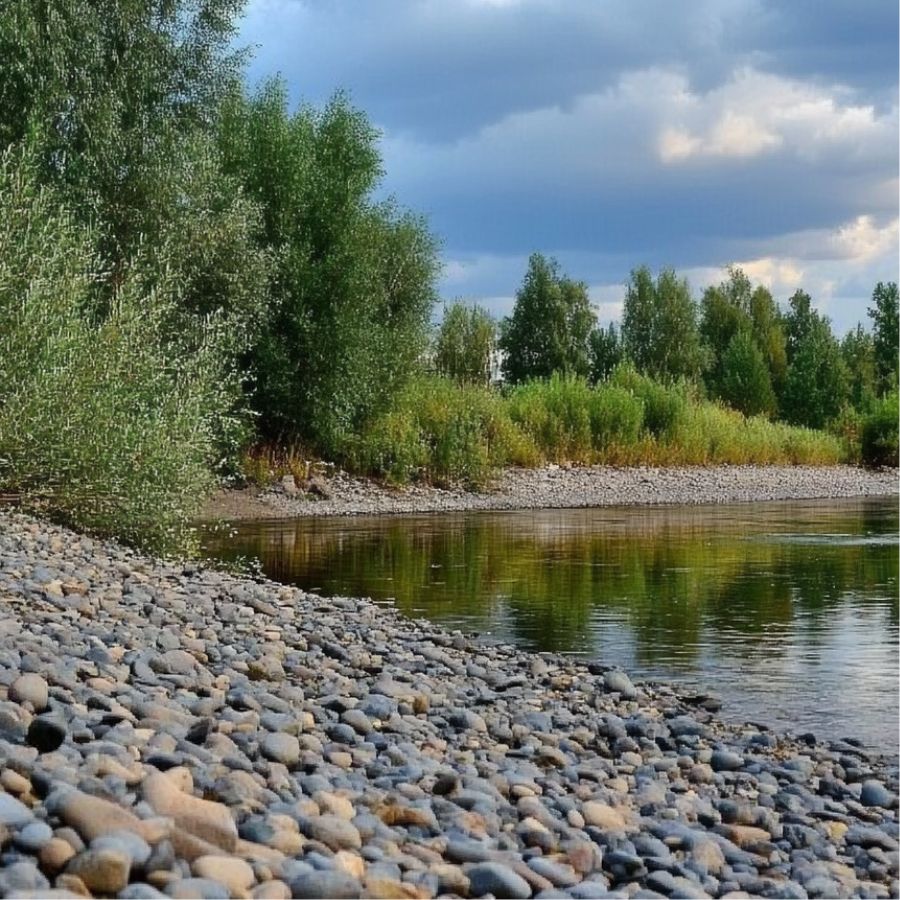
Check gravel deposits in streams, especially after heavy rains. Garnets are heavier than most minerals, so they concentrate in stream bends where water slows down.
Use a pan or sieve to sort through the gravel, keeping an eye out for the distinctive reddish crystals that glimmer when wet.
Pegmatite Areas
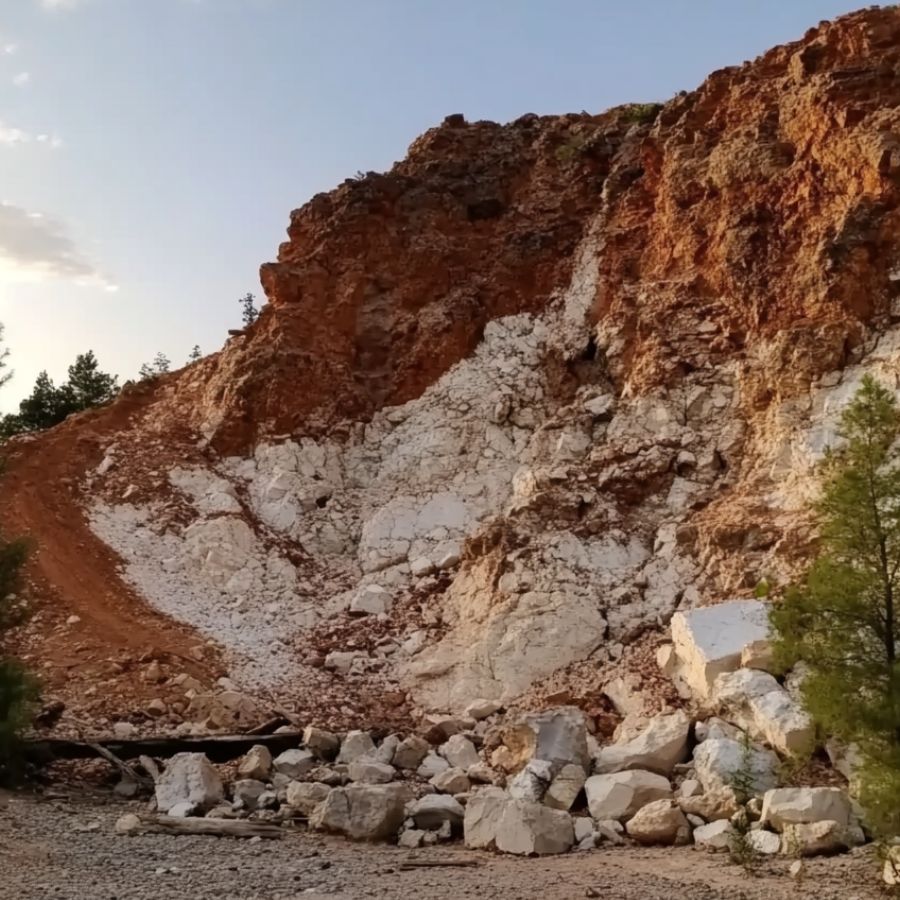
Search around pegmatite formations, which are coarse-grained igneous rocks that sometimes form large crystal pockets where beautiful garnet specimens can be found nestled among other minerals like mica and feldspar.
These areas often have scattered surface rocks and exposed cliff faces that weather over time, releasing garnet crystals.
Old Mining Areas
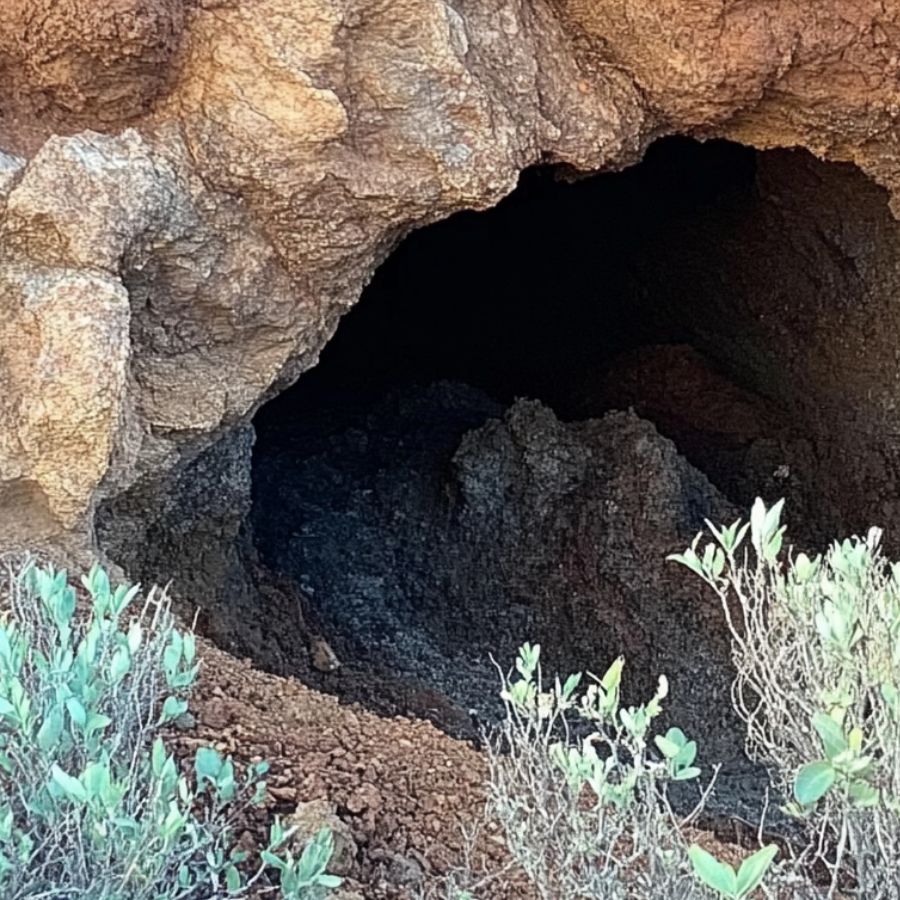
Explore permitted public mining dumps and tailings piles near historical mica or feldspar mines, where garnet was often discarded as a byproduct during past mining operations and can still be found in abundance among the leftover material.
Some Great Places To Start
Here are some of the better places in the state to start looking for garnet:
Always Confirm Access and Collection Rules!
Before heading out to any of the locations on our list you need to confirm access requirements and collection rules for both public and private locations directly with the location. We haven’t personally verified every location and the access requirements and collection rules often change without notice.
Many of the locations we mention will not allow collecting but are still great places for those who love to find beautiful rocks and minerals in the wild without keeping them. We also can’t guarantee you will find anything in these locations since they are constantly changing.
Always get updated information directly from the source ahead of time to ensure responsible rockhounding. If you want even more current options it’s always a good idea to contact local rock and mineral clubs and groups
Cleveland Area
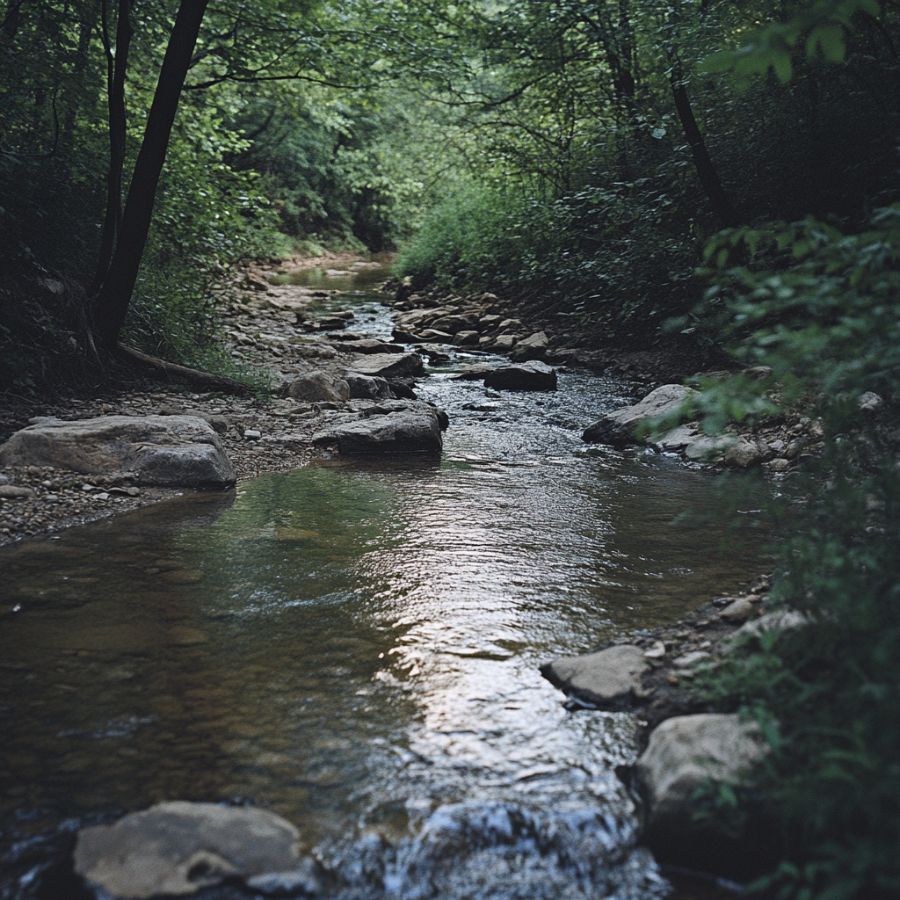
Cleveland County is in the southern part of the state. With its mix of igneous and sedimentary rocks, the county has created the perfect conditions for garnet formation over millions of years.
Many rockhounds visit the areas around Rison, the county seat, to search for these beautiful red stones. The garnets here are often found in peridotite, a dark green igneous rock that is quite dense. Specific spots near Highway 79 in the eastern section of the county offer exposed rock outcrops where garnet crystals can be spotted.
Local collectors suggest looking in schist and gneiss formations, as these metamorphic rocks commonly host garnets. A hand lens helps identify the distinctive crystal shapes.
Cleveland County garnets have a rich color range from deep burgundy to lighter reddish-pink hues, making them popular with both beginners and experienced collectors.
Grant Area
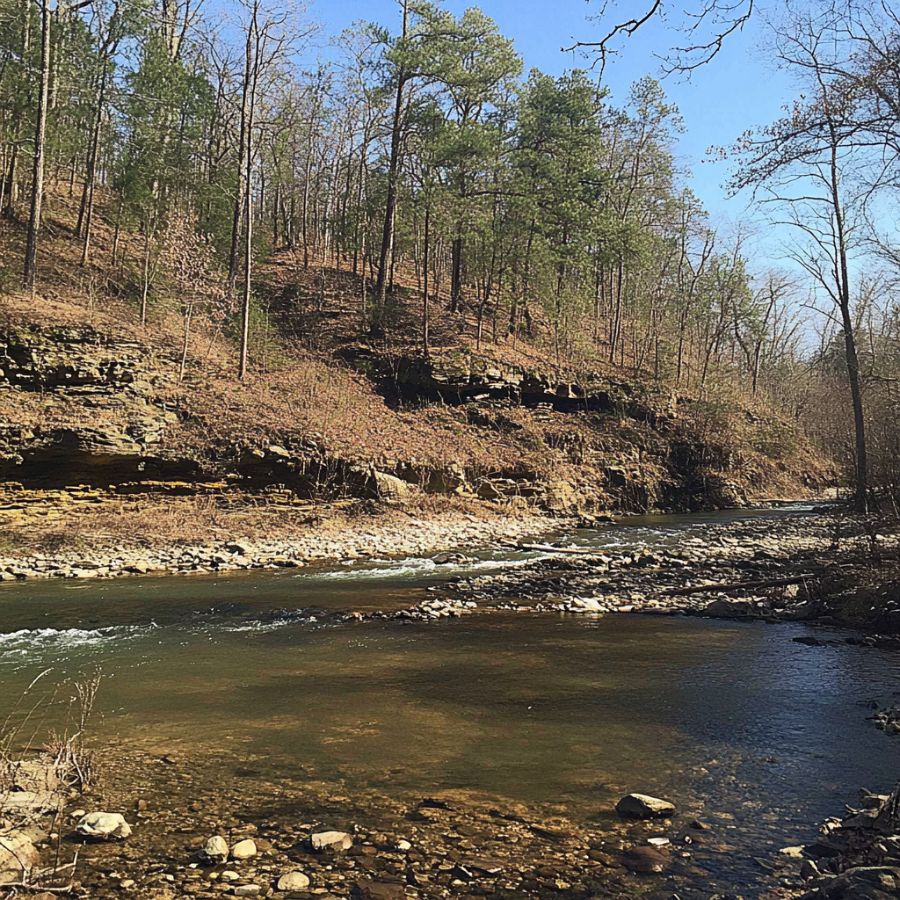
Grant County sits in the central part of the state with Sheridan as its county seat. The county was named after President Ulysses S. Grant in 1869. Rolling pine hills cover much of the landscape, and the Saline River flows through the area.
Garnet hunters find this county interesting because of its special mix of rock types. The area sits where the Ouachita Mountains meet the Gulf Coastal Plain, creating diverse mineral deposits. These red gems form in the county’s metamorphic rocks, which were created by heat and pressure over time.
Good hunting spots include areas near the Saline River, especially around Sheridan and Leola. Here, exposed rock faces sometimes reveal the telltale shine of garnets.
The county’s geological history includes ancient marine environments that later transformed, trapping minerals that would become garnets. Local rock clubs sometimes organize field trips to known garnet spots in the county, making it easier for newcomers to find these treasures.
Mount Ida

Mount Ida is famous as the “Quartz Crystal Capital of the World.” This small town in the Ouachita Mountains attracts rock collectors from everywhere. While most people come for quartz, smart collectors know garnets hide here too!
The area’s special geology formed when ancient mountains pushed upward, creating perfect conditions for various gemstones. Garnet hunters should visit Wegner Quartz Crystal Mines on Wegner Ranch Road. Their “Crystal Forest Mine” stretches across 40 acres where visitors can search for garnets among other minerals.
Another good spot is Avant Mining at Fisher Mountain on Logan Gap Road. They allow public digging, and many collectors have found garnets mixed with the more common quartz. Crystal Vista in the Ouachita National Forest offers free access for garnet hunting.
Magnet Cove

Magnet Cove is located about 12 miles southeast of Hot Springs. This small community got its name when early settlers noticed their tools stuck to the ground due to magnetite in the soil. Geologists consider this place special because over 100 different minerals have been found in this small area.
The geology here is truly one-of-a-kind, a circular volcanic formation called an “alkalic ring complex” that formed millions of years ago. Garnets are among the treasures found here, particularly a type called melanite, which has a dark, almost black appearance.
Good spots to look for garnets include the south bank of Arkansas Highway 51 near Magnet Cove Church, where weathered garnets can be found in the soil. Another promising location is near the Cove Creek Bridge, where special rock formations contain various minerals, including garnets.
Cook Mountain along U.S. Highway 270B also has garnet-bearing rocks. Magnet Cove is even the discovery site of kimzeyite, a rare zirconium-rich garnet found nowhere else when it was first identified.
Pike Area

Pike County lies in the southwestern part of the state. This county holds a world-famous treasure, Crater of Diamonds State Park near Murfreesboro. The park sits on top of an ancient volcanic pipe made of lamproite rock that pushed various gemstones to the surface.
Visitors can search the 37.5-acre plowed field for garnets, which often appear as small reddish crystals in the soil. The park has washing pavilions where you can use wet-sifting to separate heavier minerals like garnets from dirt. Park staff can help identify your finds.
Garnets here typically have a deep red color and glassy shine when cleaned. Beyond the famous park, experienced collectors also check out Twin Knobs No. 1 Mine southeast of Murfreesboro, another spot where garnets have been found.
Places Garnet has been found by County
After discussing our top picks, we wanted to discuss the other places on our list. Below is a list of the additional locations along with a breakdown of each place by county.
| County | Location |
| Montgomery | Wegner Quartz Crystal Mines |
| Garland | Ron Coleman Mining |
| Garland | Sweet Surrender Crystal Mine |
| Garland | Avant Mining |
| Garland | Hamilton Hill Mine |
| Montgomery | Bear Mountain Mine |
| Montgomery | Crystal Vista |
| Garland | Fisher Mountain |
| Garland | Jessieville |
| Lawrence | Black Rock |
| Pike | Murfreesboro |
| Montgomery | Wegner Crystal Mines |
| Polk | Stanley Shale |
| Greene | Crowley’s Ridge |
| Yell | Dardanelle |
| Ouachita | Camden |

